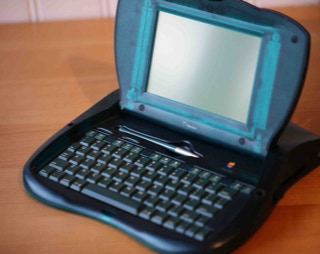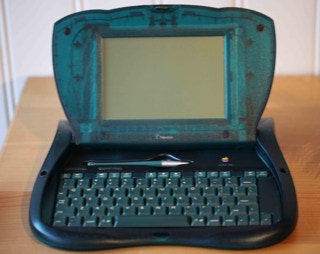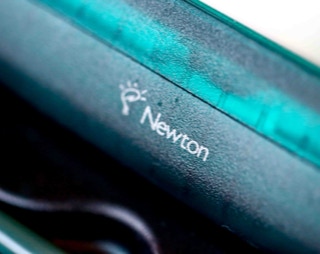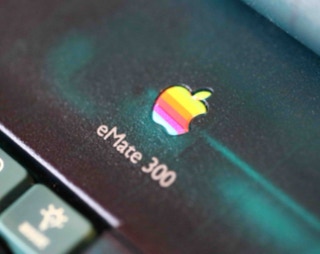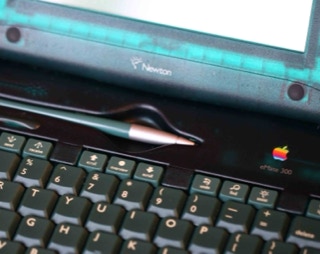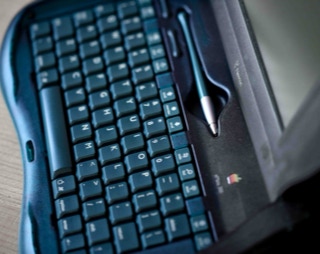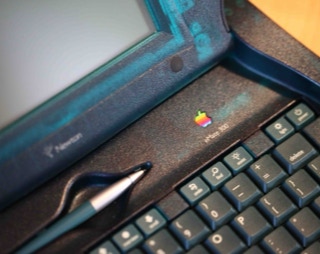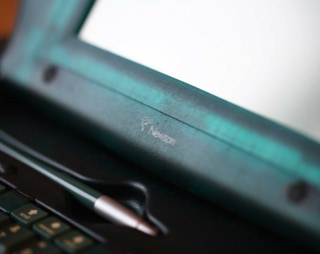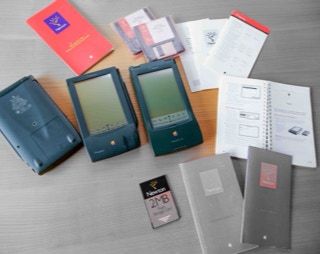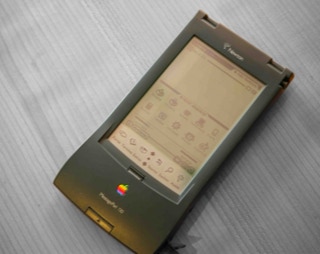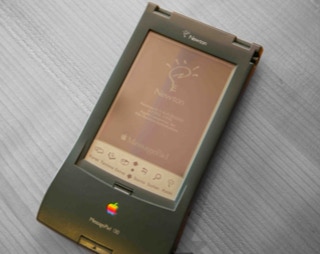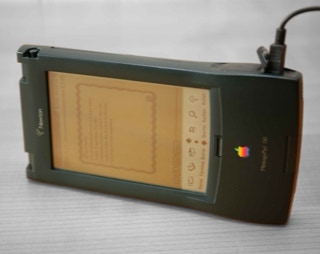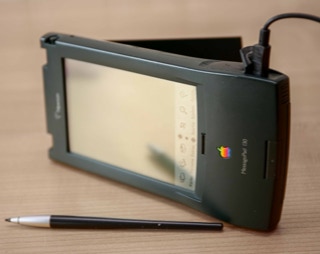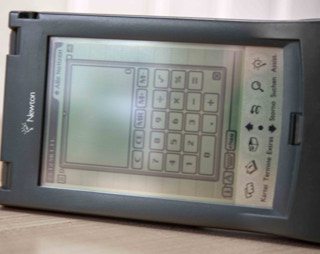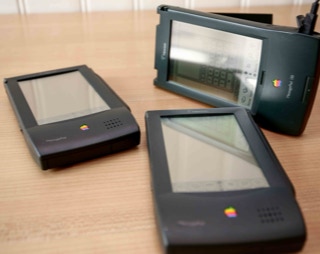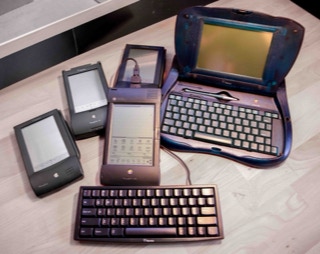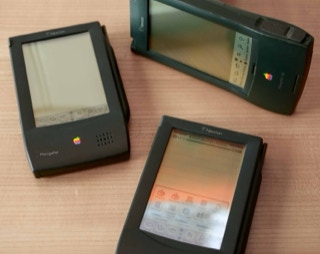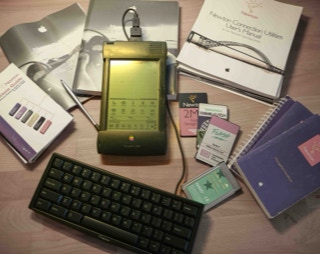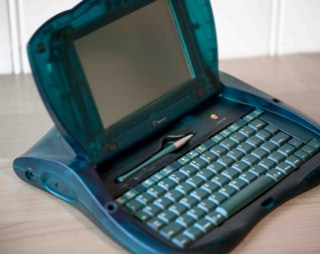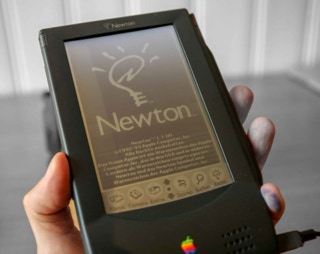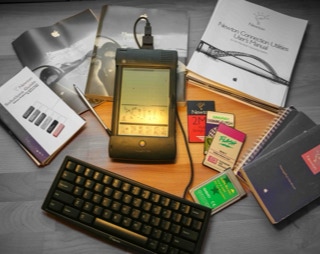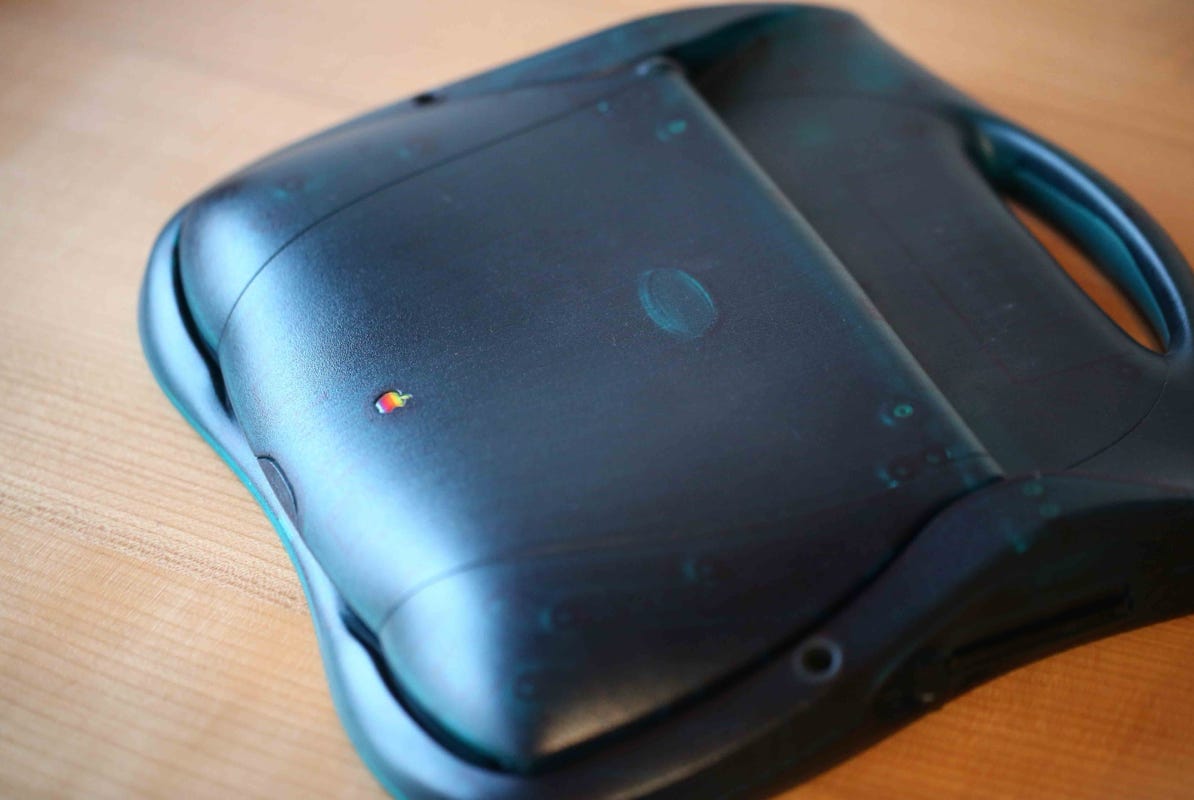newton emate 300
It took apple more than six and a half years to develop the first newton messagepad. When it was finally released it had impressive specifications. 20 MHz processor, pressure-sensitive LCD-display, localtalk port, infra-red beamer. However, all these features were overshadowed by the newtons handwriting recognition. It was apple's pride and the expectations were high.
The newton message Pad 2000 was a complete mobile computer with a wide range of software like web-browser, email-client, word processor, fax software, calendar, address book and it was even able to record speech for up to one hour on its 4 MB memory card. However, the major advantage to its predecessor (MP 130) was its new processor. The 160 MHz StrongARM processor sped up all operations of the newton message pad 2000 significantly. The MP 2000 was later re-launched as Message Pad 2100, the first Newton with an Ethernet networking card.
The emate 300 was a personal digital assistant designed for the education market as a low-cost laptop running the newton operating system. It was the only newton device with a built-in keyboard. The emate used a 25 MHz ARM 710a RISC processor and had less memory than the messagepad 2000 which used a strongARM 110 RISC processor and was more expandable.




